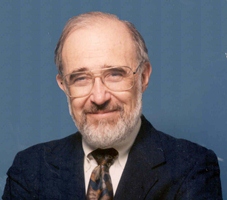The best way to protect those most vulnerable to respiratory irritation from formaldehyde – frequently found in inexpensive housing materials and furniture – is with federal regulations, said Bernard Goldstein, M.D., toxicology expert and former dean of the University of Pittsburgh Graduate School of Public Health.
A contentious debate is swirling in Washington, D.C., around U.S. Environmental Protection Agency (EPA) efforts to set testing standards on products containing formaldehyde to ensure that dangerous levels of the gas cannot build up in people’s homes.
“I very much commend the EPA for coming out with these regulations,” said Dr. Goldstein, himself a former EPA research advisor during the Reagan Administration. “Formaldehyde can be a serious public health problem, particularly among poorer populations who are more likely to have inexpensive furniture and flooring in smaller, less ventilated rooms.”
Formaldehyde is frequently used in glues that bond together composite wood materials, such as particle board and laminated furniture and flooring. Over time, it can escape into the rooms where the material is housed.
Some people, particularly children, have severe, acute reactions to formaldehyde that can cause serious breathing difficulty. There is increasing evidence that long-term, more concentrated exposure can lead to cancer.
“But really it’s the short-term effects we’re most concerned with,” said Dr. Goldstein, professor emeritus in Pitt Public Health’s Department of Environmental and Occupational Health. “It’s a fierce irritant that can cause your eyes to burn and your mouth and upper airway to get irritated, making you cough and feel like you can’t breathe.”
The formaldehyde debate was ignited after Hurricane Katrina in 2005, when high levels of the gas were detected in the temporary trailers supplied to hurricane victims. Materials imported from Asia, particularly China, tend to contain higher levels of formaldehyde. By 2010, Congress issued legislation ordering EPA to craft federal rules regulating formaldehyde’s use.
The rules have since been stalled due to industry lobbying and debate over potential job losses, cost and the ultimate health impact.








